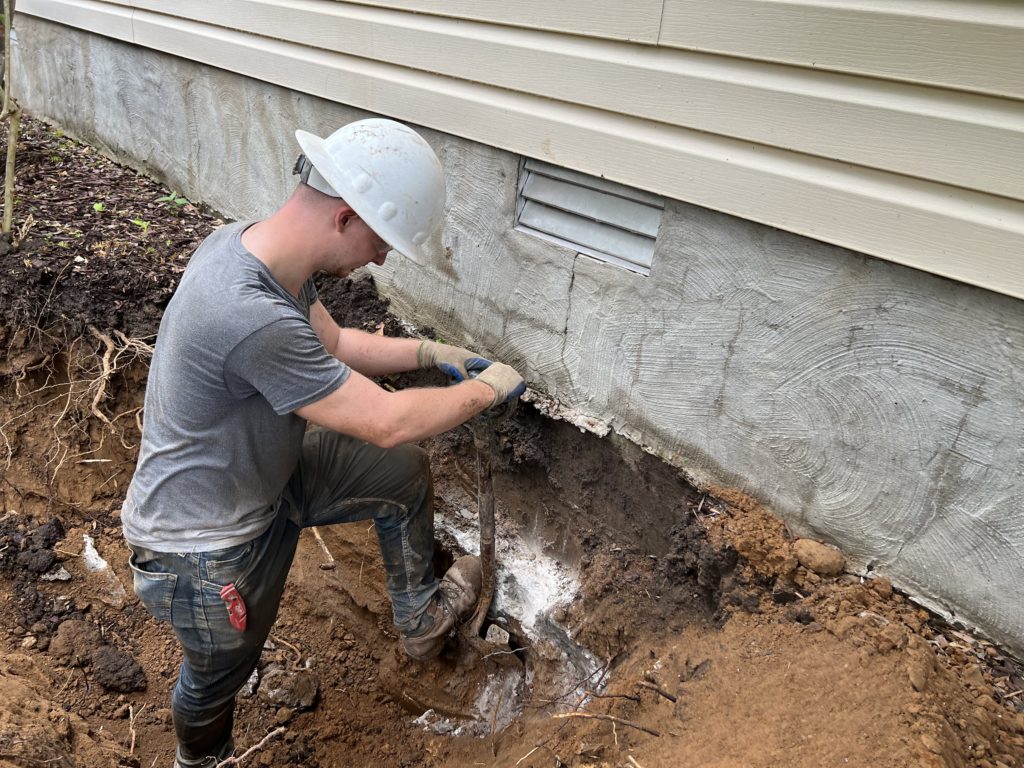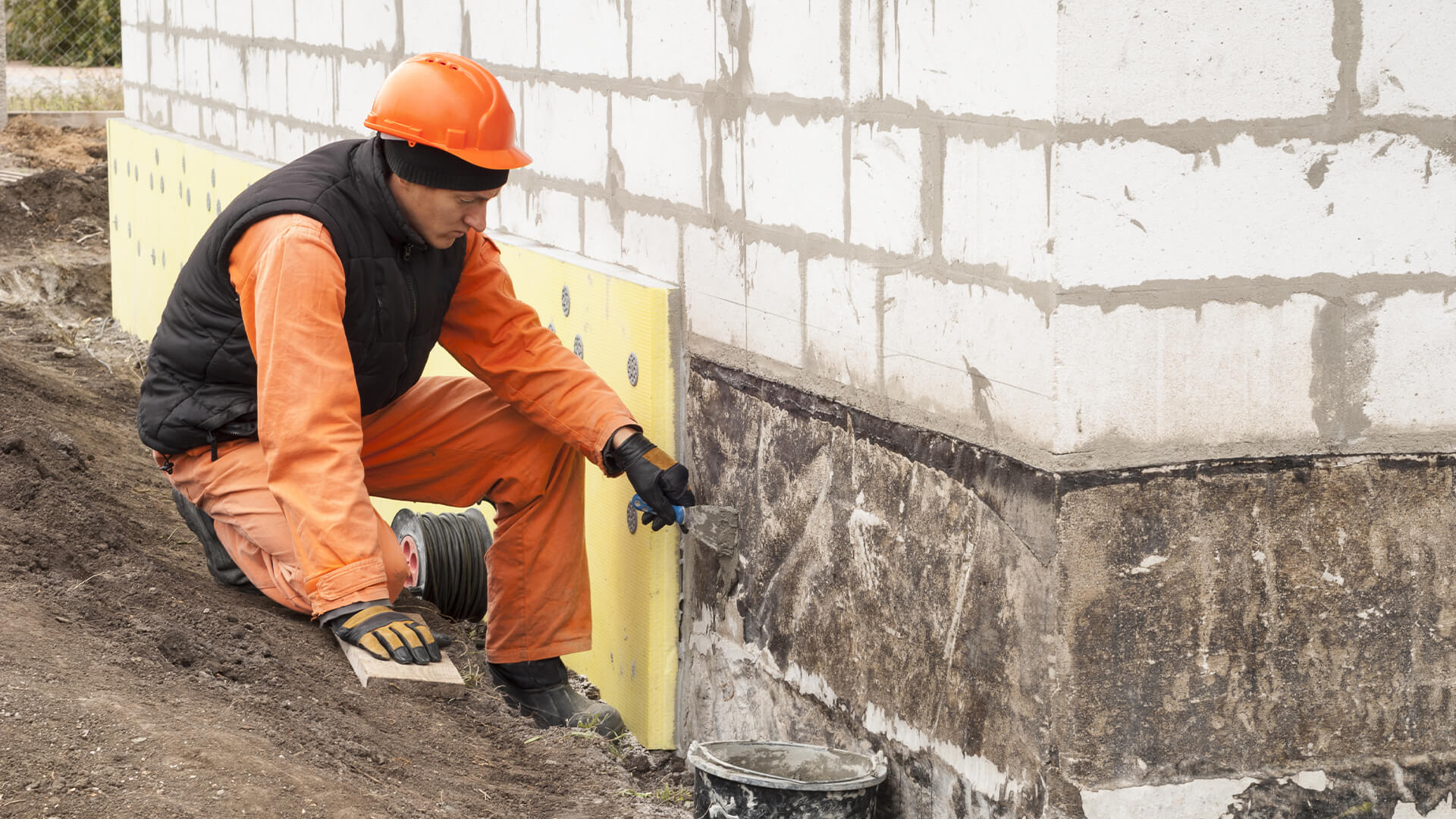Discover Reliable Providers for Foundation Repair Oklahoma: A Comprehensive Summary
Discover Reliable Providers for Foundation Repair Oklahoma: A Comprehensive Summary
Blog Article
Checking Out Different Techniques of Foundation Fixing for Different Dirt Types
Foundation repair is a vital facet of preserving architectural integrity, especially when thinking about the diverse obstacles presented by various soil kinds. The intricacy of soil actions under differing problems requires a customized method to repair, ensuring ideal remedies such as helical piers for unstable soils or chemical grouts for cohesive layers. The concern stays: how do we establish the most effective approach for each unique circumstance? Recognizing the interplay in between dirt attributes and repair service methods is essential, yet there is more to discover in the quest for lasting remedies. What factors absolutely dictate the option of technique?
Understanding Dirt Kinds
Soil kinds play an essential role in the stability and longevity of structure structures, making it essential for house owners and construction experts to comprehend their qualities and behavior. The communication in between soil and foundation can determine the structural integrity of a building. There are numerous soil kinds, each with distinctive physical residential properties that impact how structures are developed and preserved.
Granular dirts, such as sand and crushed rock, offer excellent water drainage and are frequently thought about secure. They have high load-bearing abilities, which can support much heavier frameworks. These soils can move if not compacted correctly, leading to potential negotiation problems. On the other hand, cohesive dirts like silts and clays display different actions. These dirts have a tendency to keep dampness, and their load-bearing ability can differ dramatically with adjustments in moisture content.
Rocky soils, understood for their toughness and security, offer excellent support for foundations however may require specialized devices for excavation. Conversely, fertile dirts, which are a well balanced mix of clay, silt, and sand, typically supply positive conditions for foundation assistance as a result of their modest drain homes.

Recognizing these dirt kinds is important for selecting ideal foundation repair techniques, ensuring the sturdiness and safety of structures over time.
Challenges With Expansive Clay
Among the various dirt types, large clay offers unique obstacles for foundation security because of its propensity to undertake significant quantity modifications with wetness variation. This sort of soil swells when wet and contracts when completely dry, which can put in significant pressure on structures. These fluctuations can bring about structure breaking, heaving, and negotiation issues, positioning considerable dangers to the structural honesty of buildings.
The obstacles with expansive clay are exacerbated by its plasticity index, which determines the soil's capability to change form and quantity. A high plasticity index shows greater capacity for movement, increasing the probability of damages to foundations. This is specifically troublesome in regions experiencing regular or extreme weather adjustments, where cycles of wet and completely dry conditions are typical.
Furthermore, the depth of extensive clay layers can vary, complicating the analysis and preparation of appropriate foundation fixing methods. These complexities call for a complete geotechnical examination to make certain reliable structure fixing methods are applied, stressing the relevance of addressing extensive clay challenges with experience and treatment.
Solutions for Sandy Soils
Sandy dirts, characterized by their big fragment size and reduced communication, present distinctive obstacles for structure stability due to their tendency for changing and disintegration. By securing the structure to much deeper, extra steady soil layers, these systems can offer the required assistance to combat the changing nature of sandy dirts.
Another recommended technique is the application of soil stabilization techniques. Chemical grouting, for example, includes injecting a supporting agent into the dirt, which enhances communication and decreases permeability. This procedure helps to solidify the sandy substrate, therefore lessening the danger of disintegration and movement.
In addition, mounting appropriate water drainage systems is essential in sandy soil problems. Guaranteeing appropriate water drainage can stop water build-up around the structure, which frequently aggravates erosion and soil displacement. Methods such as French drains or surface grading can be used to route water away from the structure boundary.
Dealing With Clearing Up in Loamy Soils
Loamy soils, recognized for their balanced mix of clay, silt, and sand, offer a productive base for many structures however can in some cases cause foundation settling because of their one-of-a-kind structure. This balanced structure provides exceptional drain and nutrient retention, making it perfect for farming and landscape design. However, this very same characteristic can become troublesome for foundations, as changes in dampness material can trigger the dirt to expand or agreement, resulting in resolving.
Precise soil testing is essential to identify the certain make-up and moisture content of the loam. Once data is gathered, executing correct water drainage options is vital to maintain constant moisture degrees, thereby decreasing the danger of soil contraction or expansion.

Ingenious Repair Work Methods
In the world of foundation repair, cutting-edge strategies are consistently being created to attend to the complex tests positioned by numerous soil conditions. As soil kinds vary dramatically in their architectural residential properties, standard methods may not always are enough. The advent of brand-new technologies in foundation repair service provides more tailored solutions, making certain stability and long life.
One noteworthy development is making use of Website helical piers, which are especially reliable in unpredictable or large soils (foundation repair Oklahoma). These piers are screwed into the ground till they get to a steady layer of dirt, providing strong assistance for the foundation above. This method lessens disturbance and is versatile to different soil types, making it a versatile remedy
One more cutting-edge strategy is the application of polyurethane foam shot. This approach entails infusing high-density polyurethane foam under the foundation check out here to load gaps and support the structure. It is a less invasive choice to typical underpinning, supplying fast installment with marginal disruption to the surrounding area.
In addition, dirt stablizing techniques, such as the use of chemical grouts, have acquired traction. These compounds boost soil toughness and minimize permeability, preventing future changing. Collectively, these ingenious repair service strategies supply effective services for the diverse obstacles posed by varying dirt conditions.
Final Thought

Foundation fixing is an essential aspect of preserving architectural stability, particularly when taking into consideration the diverse difficulties presented by look at this site different soil types (foundation repair Oklahoma). The complexity of dirt habits under differing conditions necessitates a customized strategy to fix, ensuring optimum remedies such as helical piers for unpredictable soils or chemical grouts for natural layers. By securing the structure to deeper, more secure soil layers, these systems can give the needed assistance to combat the changing nature of sandy dirts
Foundation fixing requires mindful factor to consider of soil types to make sure stability and longevity. Chemical grouts improve dirt strength and minimize leaks in the structure in cohesive dirts.
Report this page